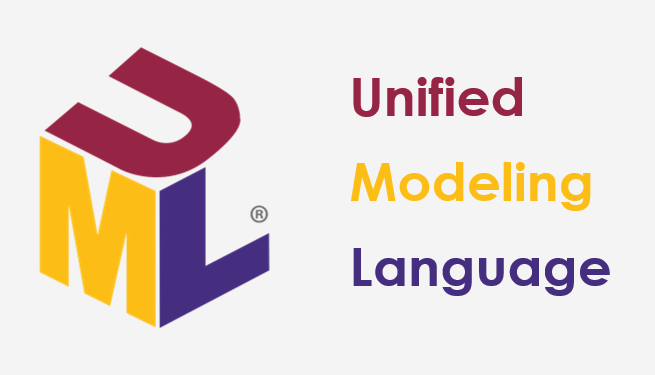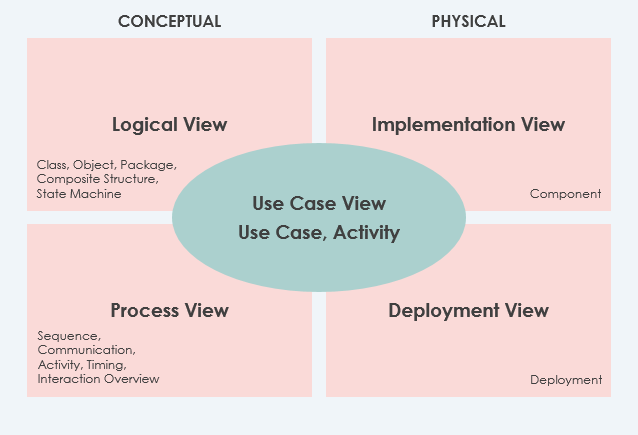Purpose of UML
Unified Modeling Language (UML) is a standard language for specifying, visualizing, constructing, and documenting the artifacts of software systems. Created by the Object Management Group (OMG), UML has become an essential tool for modeling both software and non-software systems. Although UML is not a programming language, various tools can generate code in different languages using UML diagrams.

Key Points:
- General-Purpose Modeling Language: UML is used to model software systems and non-software systems like process flows in manufacturing units.
- Object-Oriented Concepts: UML follows object-oriented methodologies, making it ideal for modeling object-oriented systems.
- Versatile Usage: UML diagrams are drawn from different perspectives such as design, implementation, and deployment.
Modeling Architecture Views Using UML
UML plays a crucial role in defining different perspectives of a system, known as the 4+1 Views of Software Architecture. These views include:

- Use Case View: Describes the functionality of the system, its external interfaces, and its principal users.
- Logical View: Describes the system structure in terms of units of implementation, such as packages, classes, and interfaces.
- Implementation View: Describes how development artifacts are organized in the file system.
- Process View: Describes the runtime structure of the system, including components with runtime behavior and interactions.
- Deployment View: Describes how the system is mapped to the hardware.
Additional Views:
- Data View: A specialization of the logical view, used if persistence is a significant aspect of the system.
14 Types of Diagrams in UML 2
UML diagrams are categorized into structural and behavioral diagrams.

Structural Diagrams
Structural diagrams show the static structure of the system and its parts. There are seven types of structural diagrams:
- Class Diagrams: Describe the objects in a system and their relationships.
- Object Diagrams: An instance of a class diagram, capturing the state of a system at a particular moment.
- Component Diagrams: Describe the static implementation view of a system, consisting of physical components like libraries and files.
- Deployment Diagrams: Describe the static deployment view of a system, showing nodes and their relationships.
- Package Diagrams: Show packages and dependencies between them.
- Composite Structure Diagrams: Depict the internal structure of a class and the collaborations it makes possible.
- Profile Diagrams: Enable the creation of domain and platform-specific stereotypes and define their relationships.
Behavioral Diagrams
Behavioral diagrams show the dynamic behavior of the objects in a system. There are seven types of behavioral diagrams:
- Use Case Diagrams: Describe the system’s functional requirements in terms of use cases and actors.
- State Machine Diagrams: Model the entire life cycle of an object, showing states and transitions.
- Activity Diagrams: Describe dynamic behavior, modeling all types of flows like parallel, single, and concurrent.
- Sequence Diagrams: Model the collaboration of objects based on a time sequence.
- Communication Diagrams: Focus on showing the collaboration of objects rather than the time sequence.
- Interaction Overview Diagrams: Provide an overview of the flow of control of the interactions.
- Timing Diagrams: Show the behavior of objects over a given period of time.
Summary
UML is a non-proprietary and open modeling language that addresses the needs of both user and scientific communities. It unifies the perspectives among different kinds of systems, development phases, and internal concepts, making it a versatile and widely adopted tool in the industry.
Key Benefits:
- Standardization: UML ends many differences between previous modeling languages.
- Unified Perspectives: It unifies views across various systems and development phases.
- Wide Adoption: Many methodologists, organizations, and tool vendors have committed to using UML, ensuring its widespread adoption.
UML’s ability to model complex systems from various perspectives makes it an invaluable tool for developers, business users, and anyone interested in understanding and designing systems effectively.

